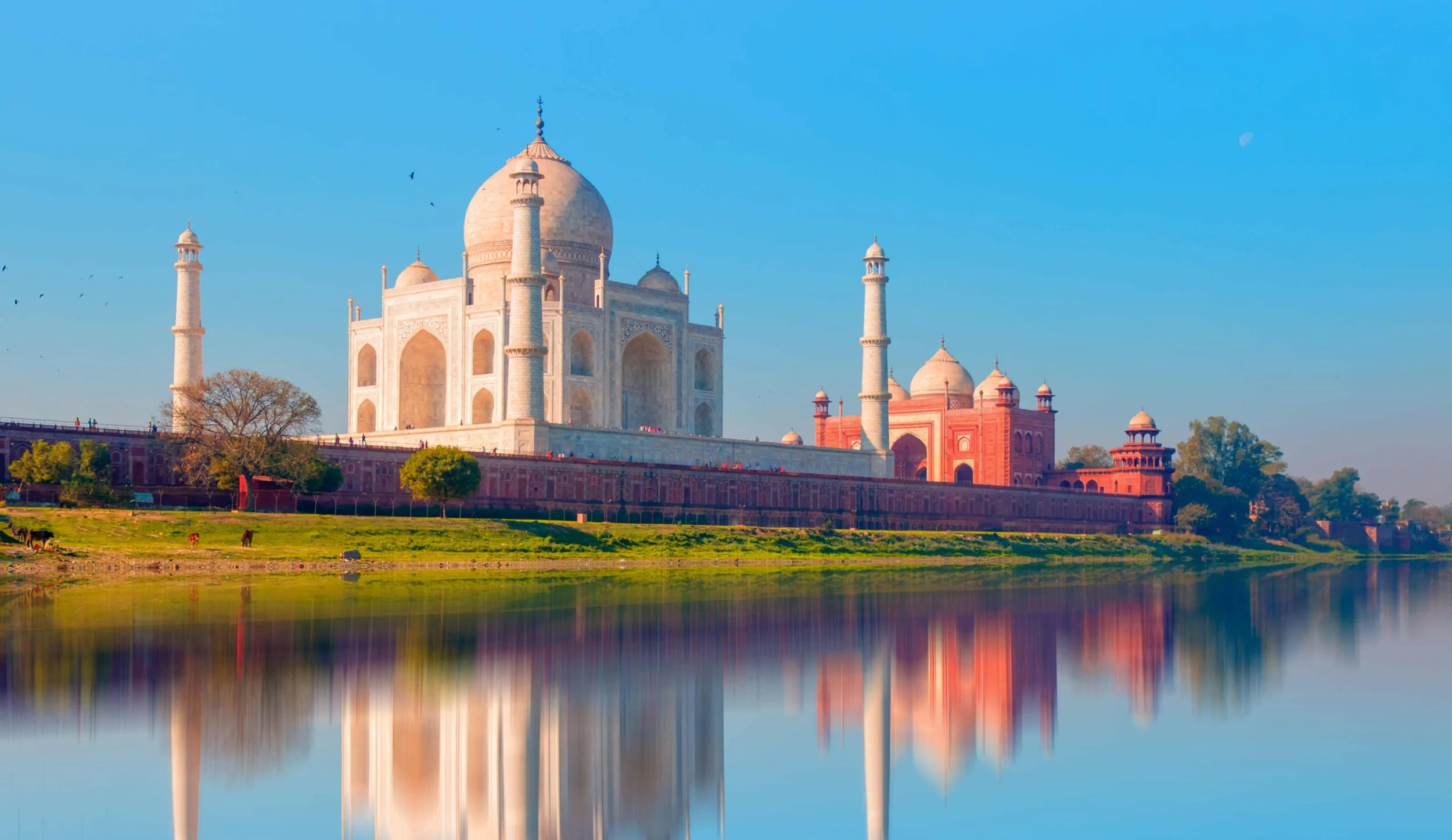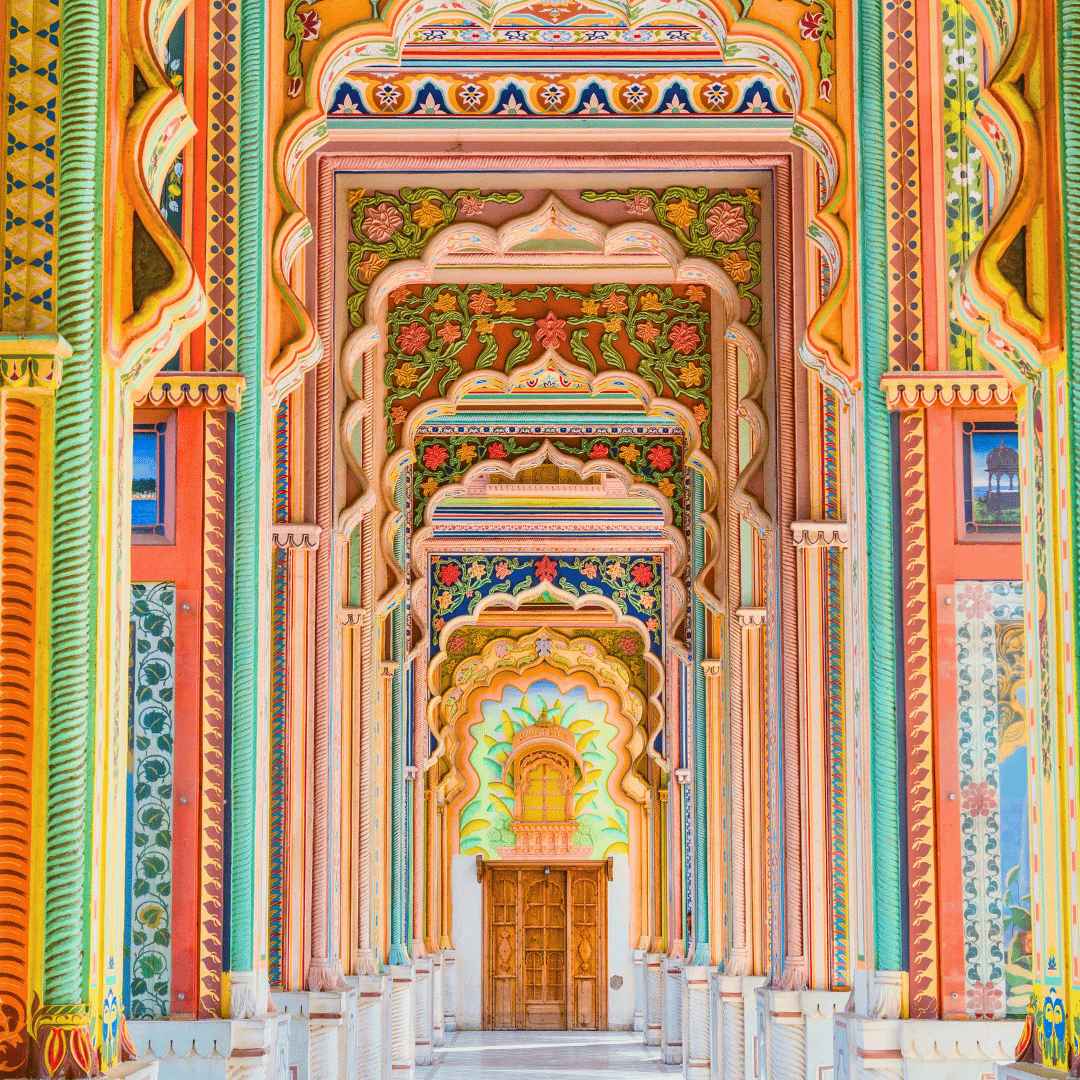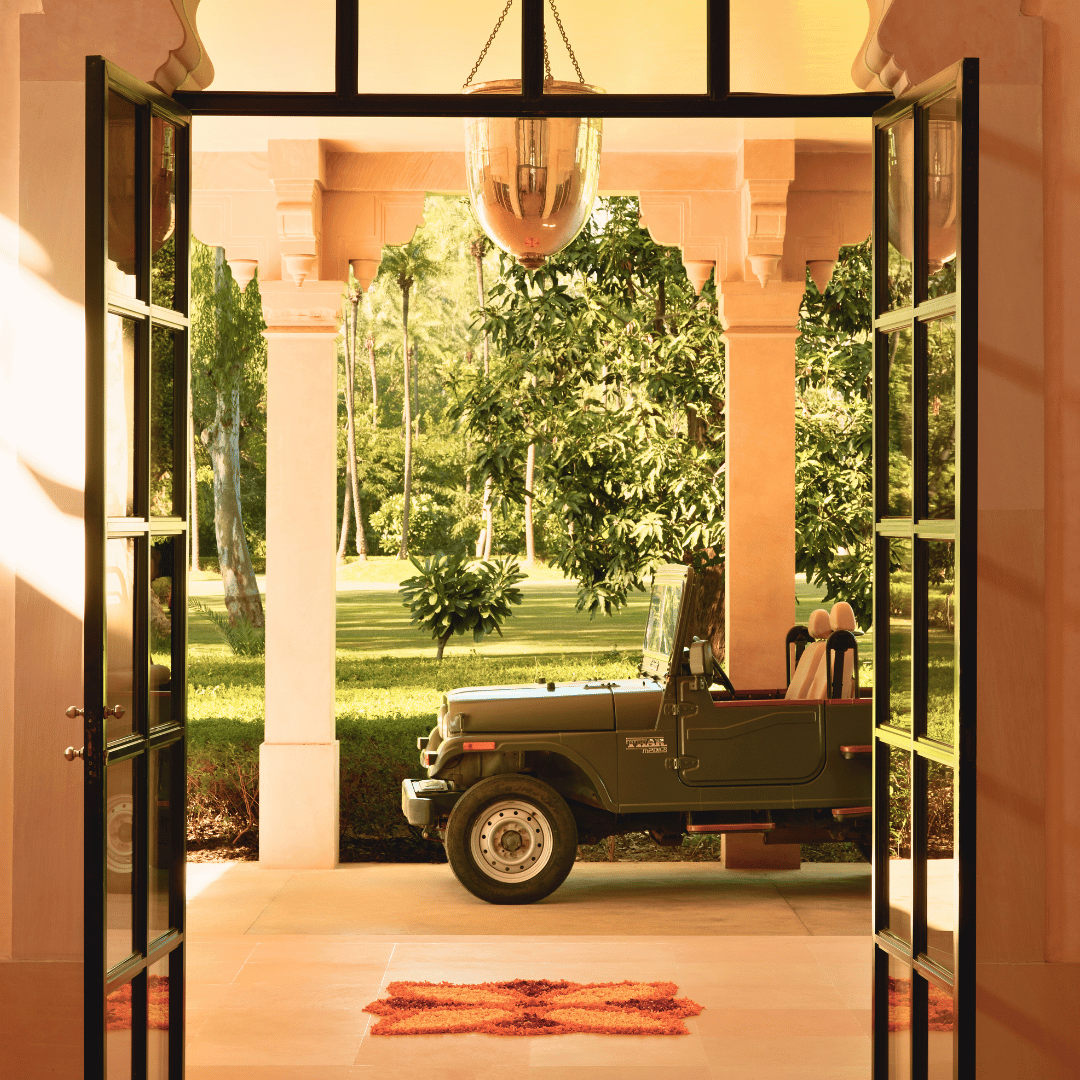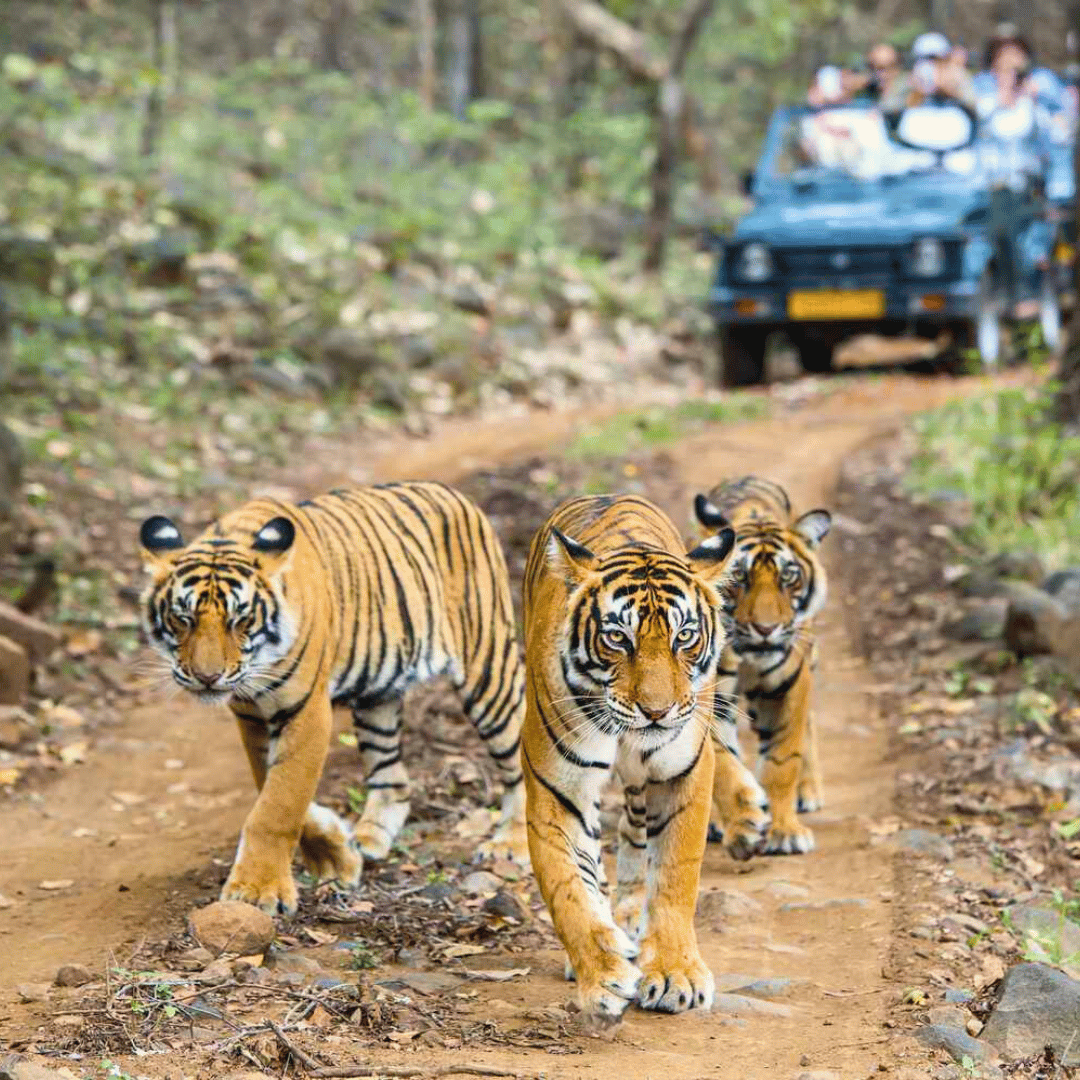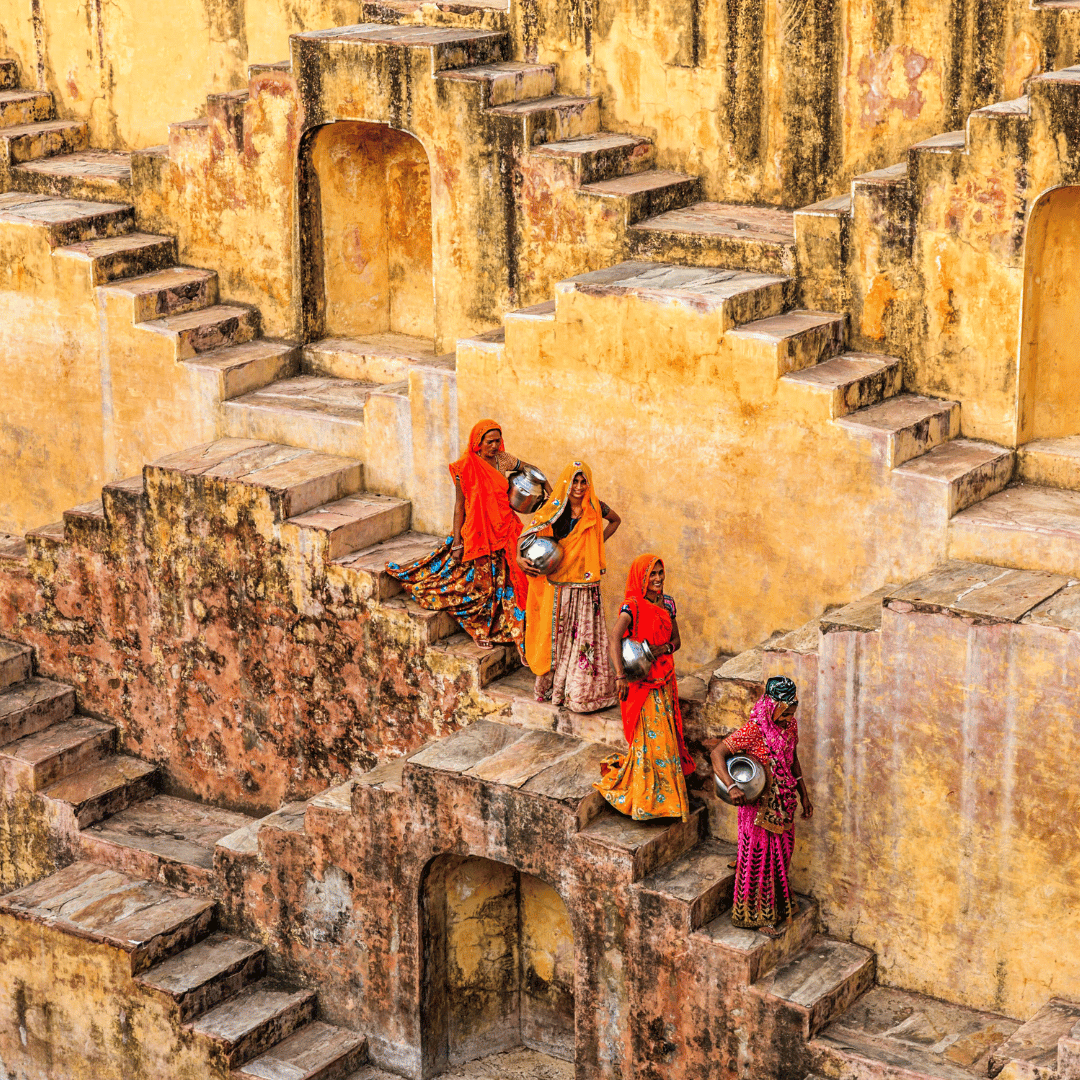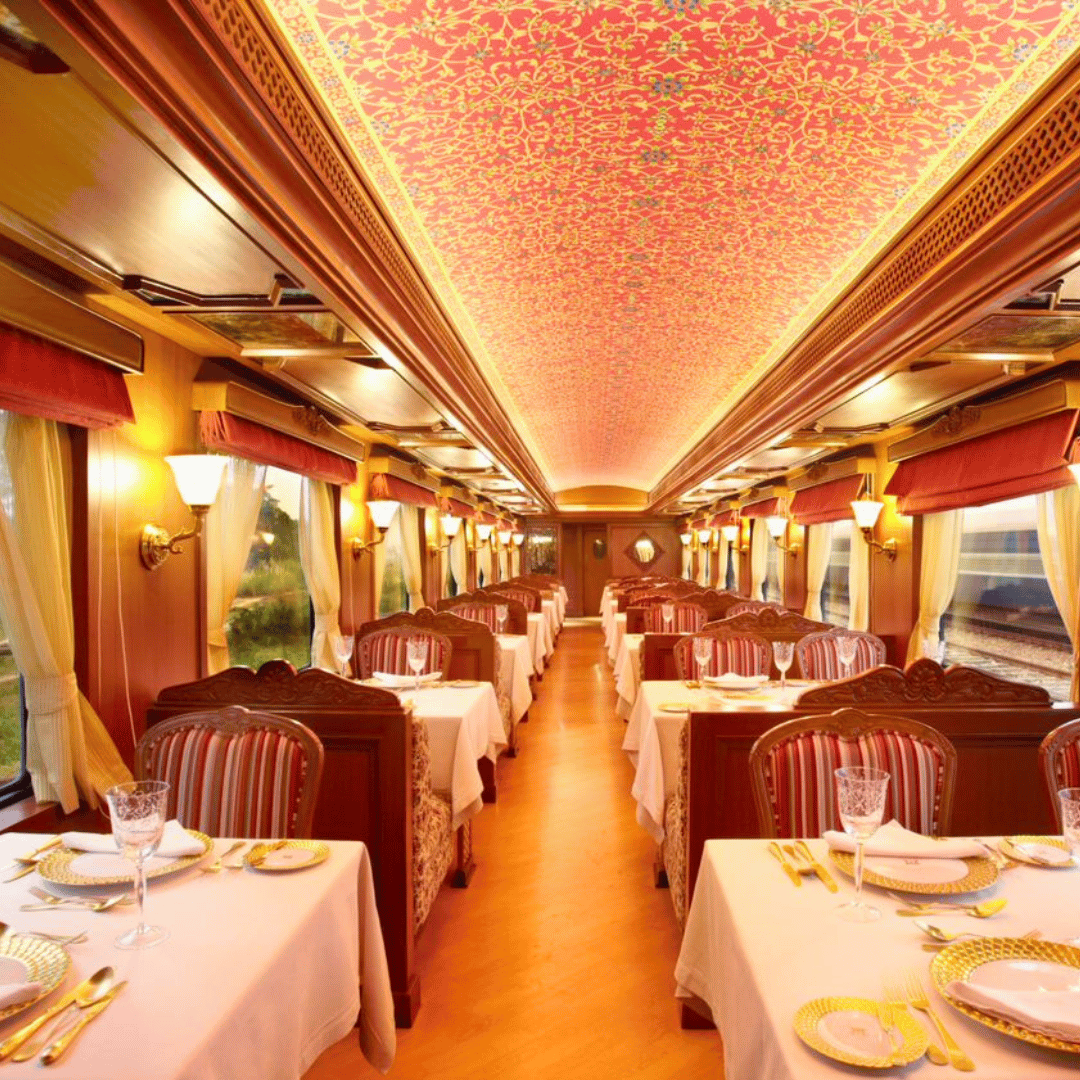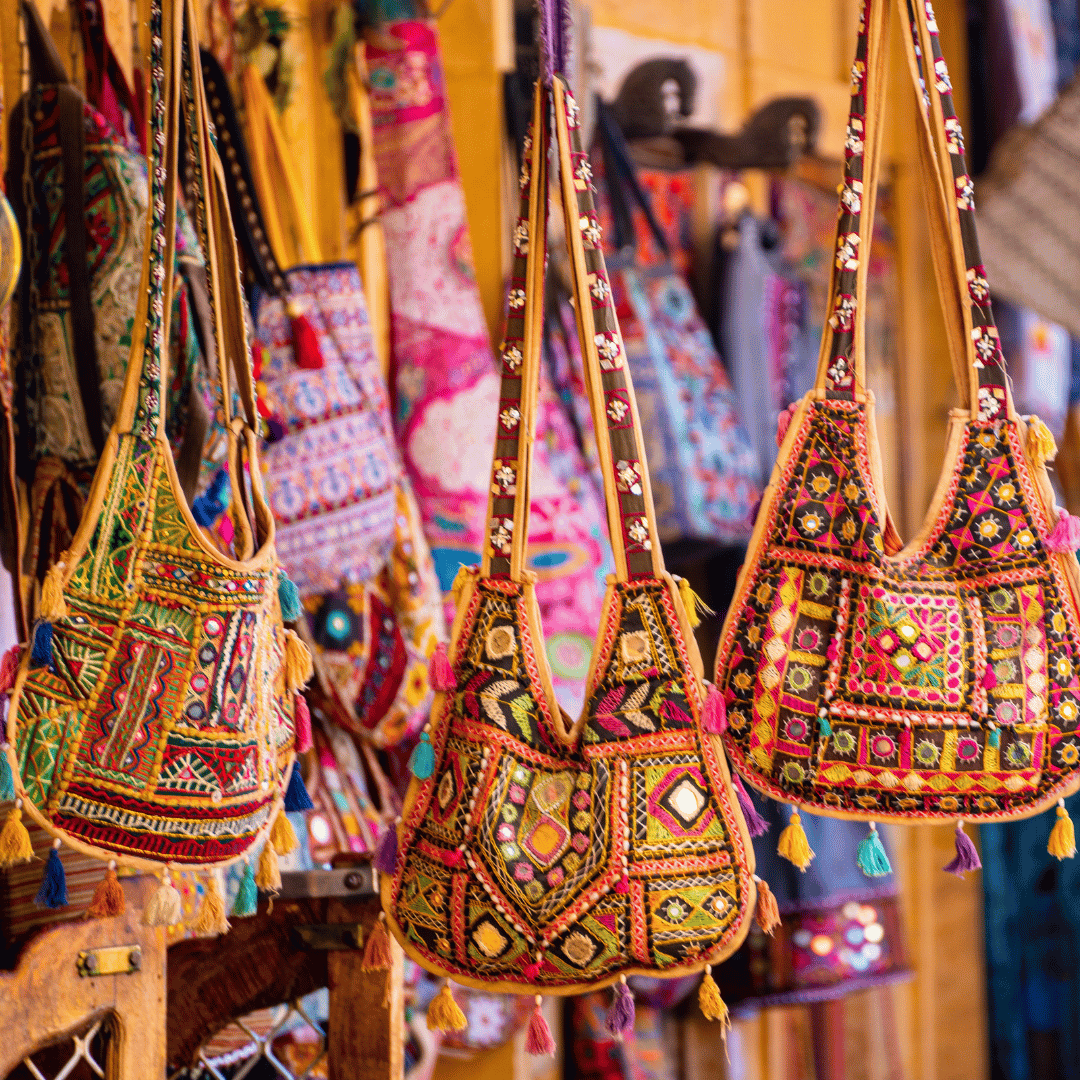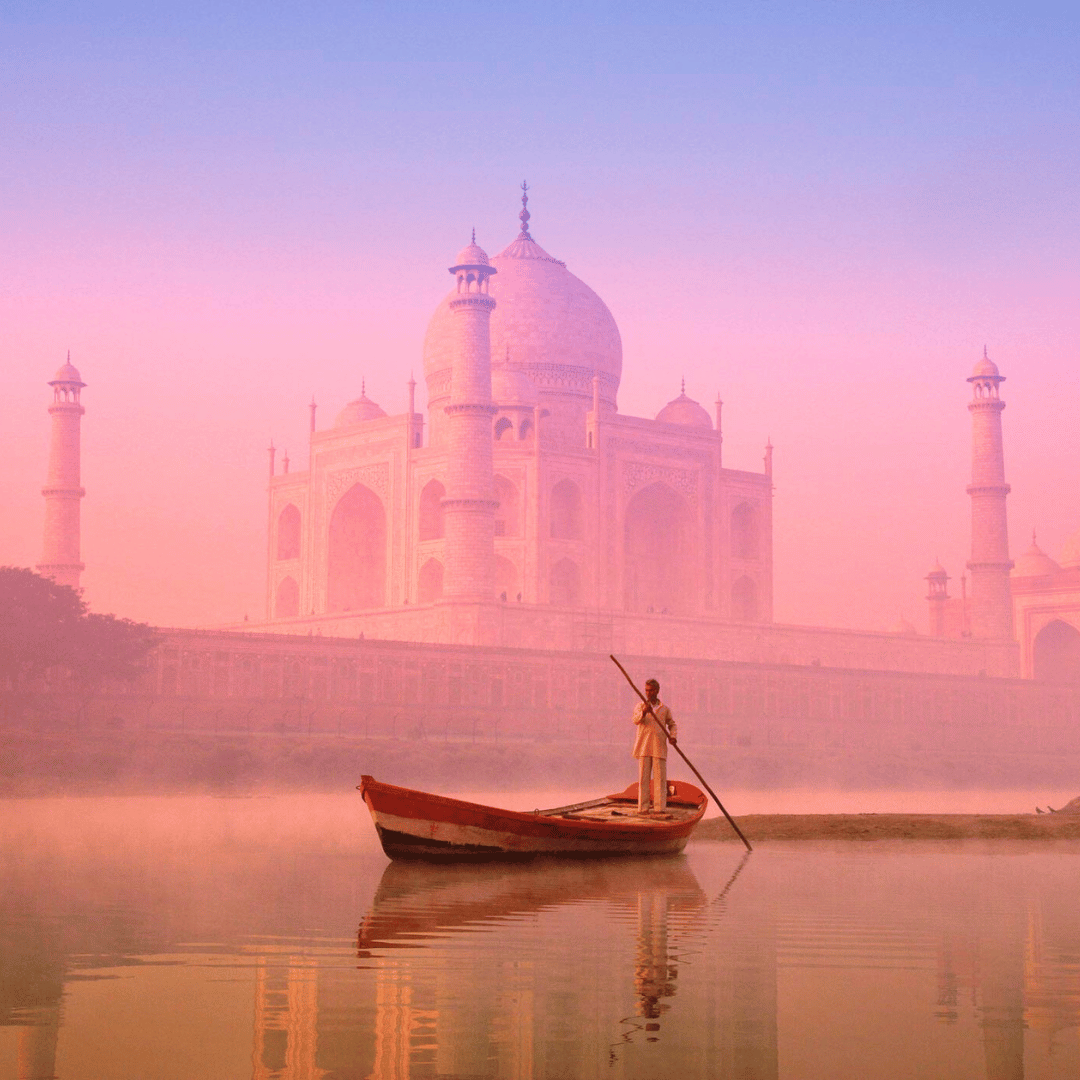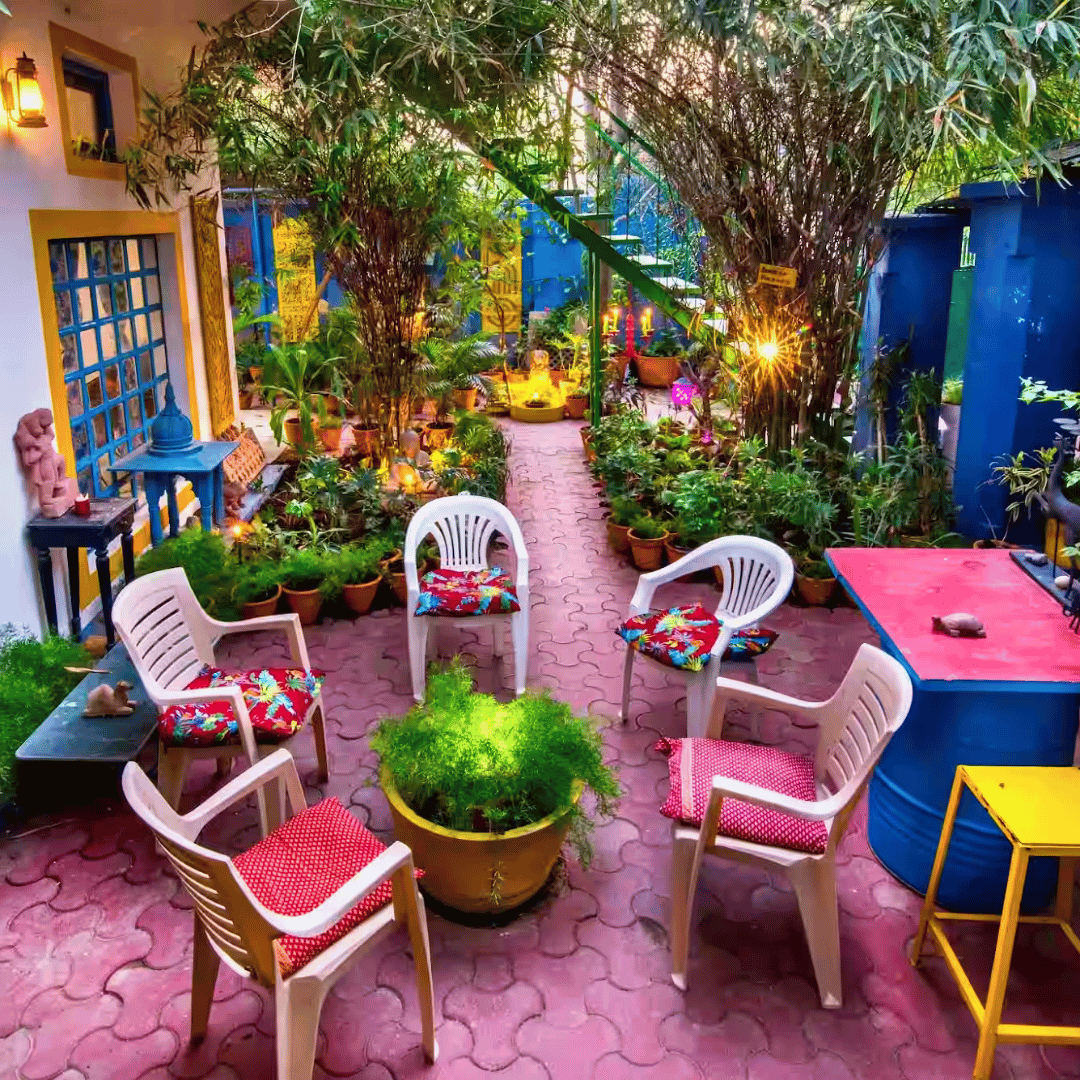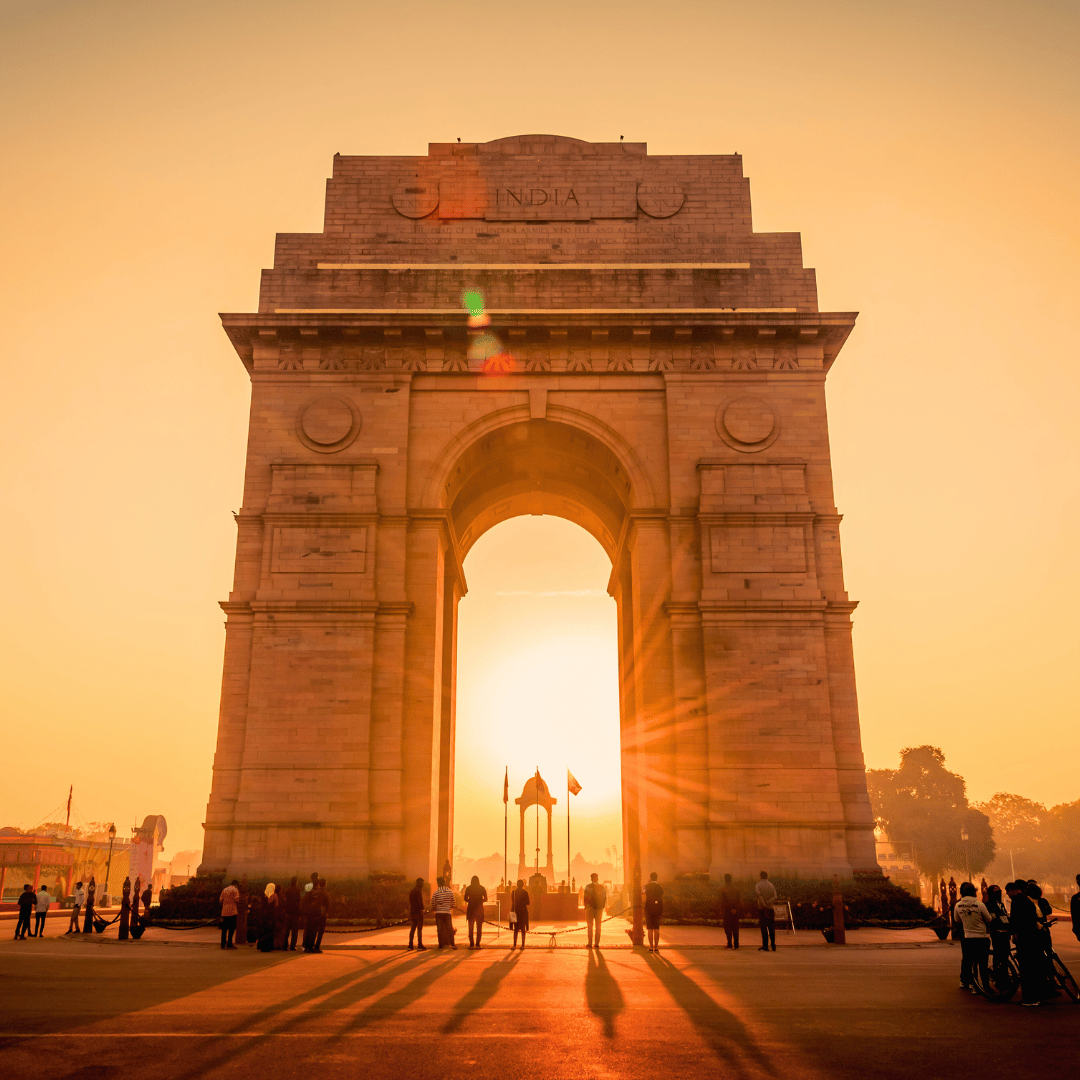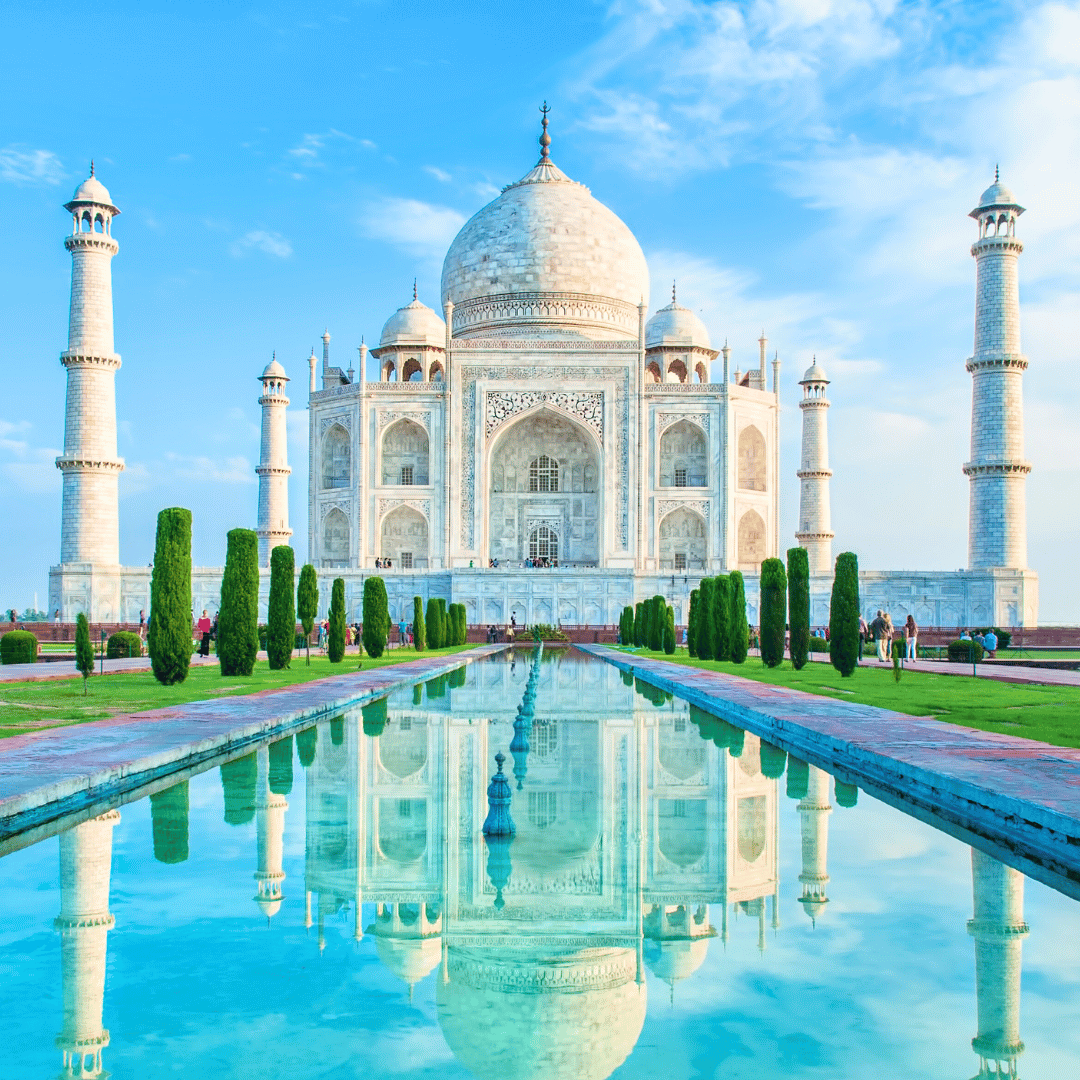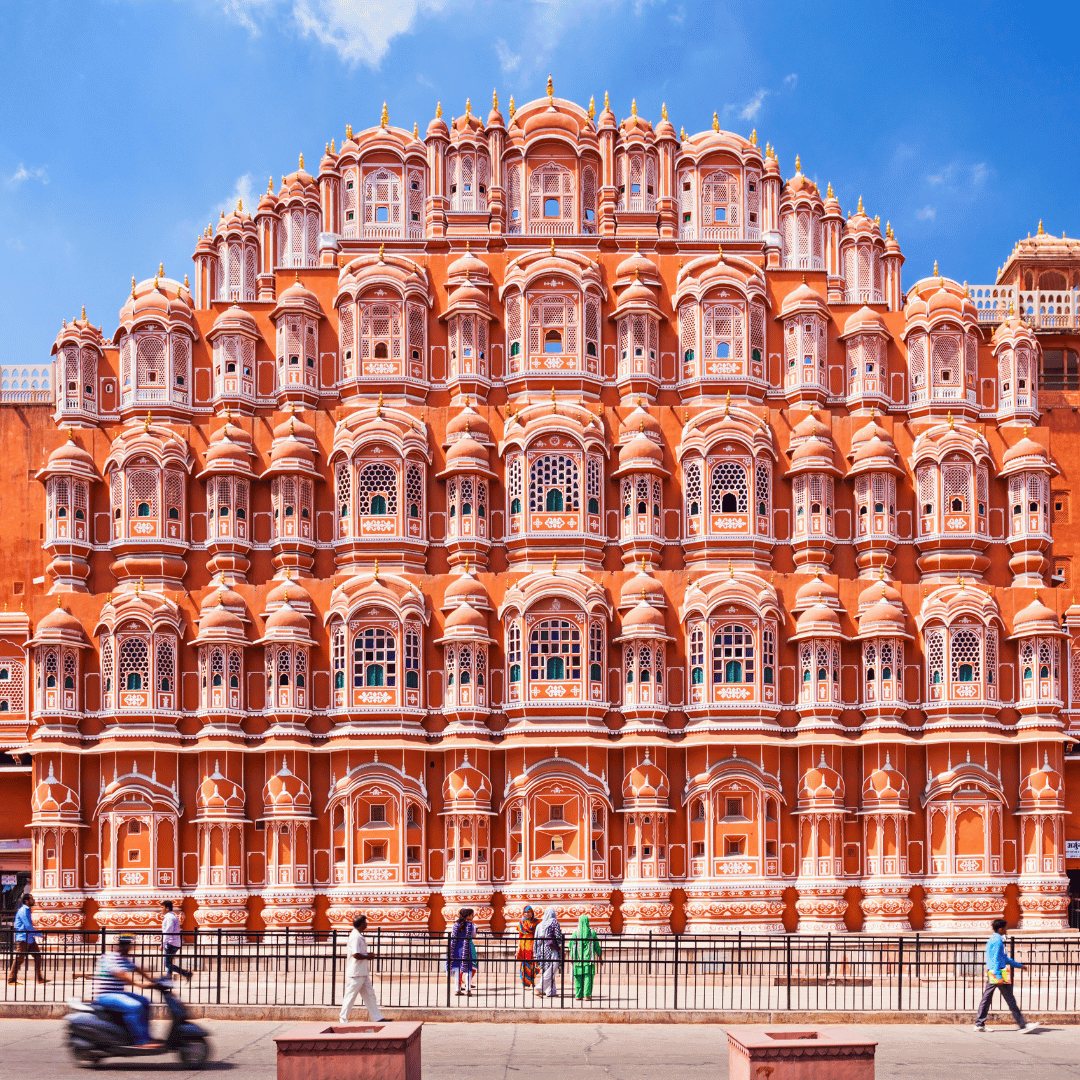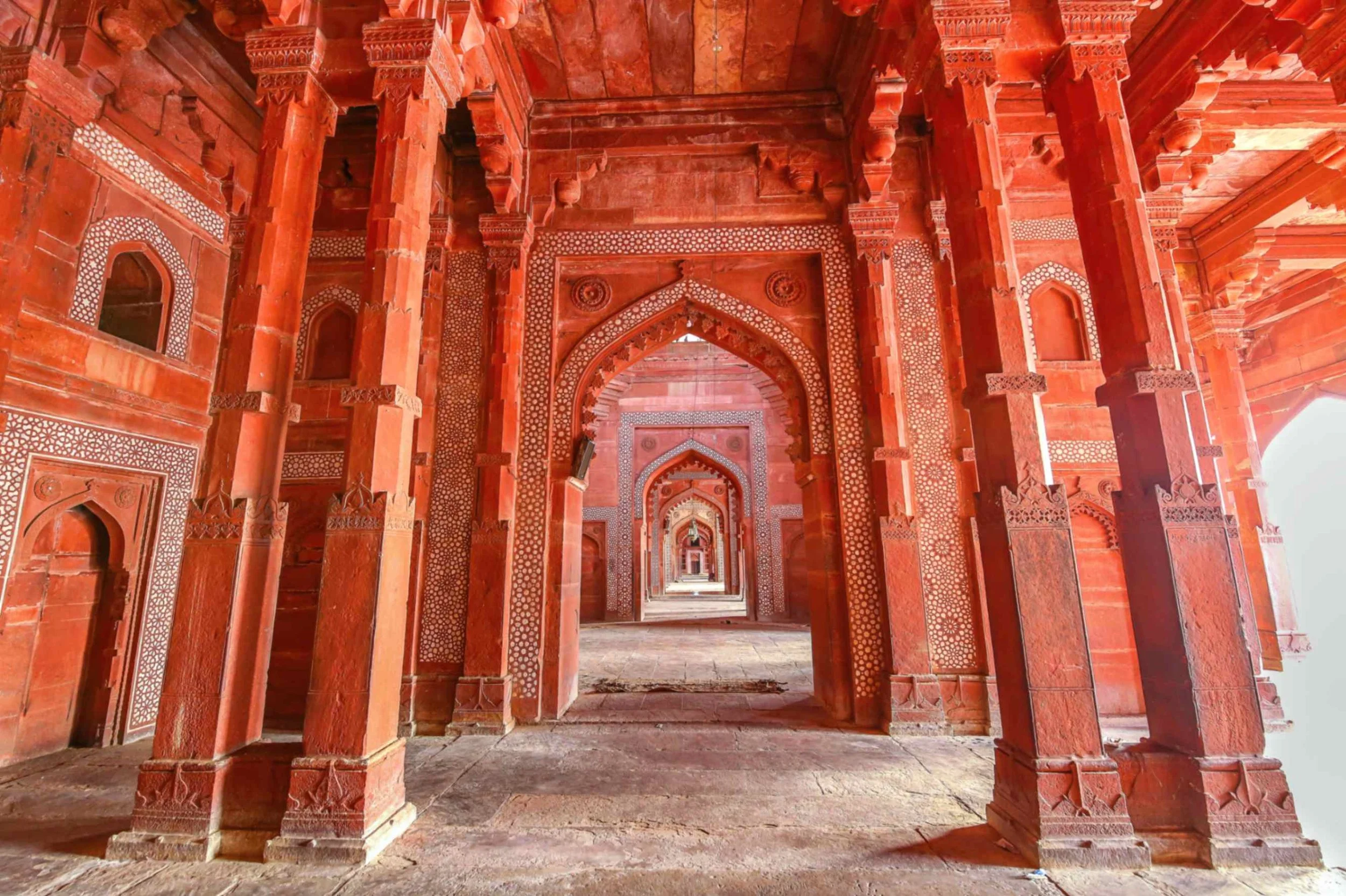
Private Golden Triangle Tours
Bespoke Packages Crafted With Care
The Golden Triangle is one of India’s most popular and accessible travel routes, connecting the northern cities of Delhi, Agra and Jaipur. Each destination offers a distinct glimpse into India’s rich history, culture and architecture. Starting in Delhi, visitors can explore a vibrant capital that blends ancient monuments like the Red Fort and Qutub Minar with bustling markets and modern life. From there, it’s a short drive to Agra, home to the world-famous Taj Mahal, a symbol of love and one of the Seven Wonders of the World. Agra also features impressive sites like the Agra Fort and the Tomb of Itimad-ud-Daulah. Completing the triangle is Jaipur, the colourful capital of Rajasthan, known for its grand palaces, lively bazaars and the stunning Amber Fort.
Together, these three cities capture a broad sweep of India’s heritage, from Mughal marvels to Rajput grandeur. Ideal for first-time visitors, exploring the iconic Golden Triangle with India Unbound offers an unforgettable introduction to the heart of India, all within a manageable travel circuit. We’re Melbourne-based, and have been designing private Golden Triangle tours for Australian travellers since 2007 - with your own driver, flexible pacing and boutique stays.
Choose Your Golden Triangle Tour Style
Golden Triangle Travel Advice For First Time Visitors
-
The Golden Triangle in India is one of the country's most famous and well-travelled tourist circuits, connecting the cities of Delhi, Agra and Jaipur. Named for the roughly triangular shape formed by their locations on the map, Golden Triangle tours offer a compact yet rich journey through some of India’s most iconic sites and diverse cultural landscapes.
Travellers usually start in Delhi, the nation’s capital, where ancient forts, Mughal monuments, colonial architecture and modern city life coexist. Highlights include the Red Fort, Jama Masjid, Humayun’s Tomb and the bustling bazaars of Old Delhi, alongside India Gate and other grand colonial-era structures in New Delhi.
From Delhi, the journey continues to Agra, most famous for the Taj Mahal - a UNESCO World Heritage Site and one of the New Seven Wonders of the World. But Agra has more to offer, including the magnificent Agra Fort and the “Baby Taj,” Itimad-ud-Daulah’s Tomb. Close by is Fatehpur Sikri, a perfectly preserved Mughal city and another UNESCO site worth visiting.
The final point of the triangle is Jaipur, the capital of Rajasthan, often called the Pink City for its rose-hued old town. Jaipur is known for its grand palaces, hilltop forts like Amber Fort, colourful bazaars and lively culture. Attractions like the Hawa Mahal (Palace of Winds), City Palace and the intricate Jantar Mantar observatory give a deep insight into Jaipur’s royal history and scientific achievements.
The Golden Triangle is an ideal introduction to India for first-time visitors, as it showcases a wide cross-section of India’s history, architecture, food, and daily life within a manageable travel route. Many travellers complete the circuit in about a week, often adding in optional stops like Ranthambhore National Park for tiger safaris, Bharatpur for birdwatching, or rural stays to experience village life.
-
Before visiting India’s Golden Triangle, it’s helpful to know that the experience will be lively, fast-paced and often overwhelming in the best possible way. Delhi, Agra and Jaipur are some of India’s most visited cities, and with that popularity comes large crowds, especially around major landmarks like the Taj Mahal, Red Fort, and Amber Fort. Queues, bustling entrances, and busy streets are part of daily life here. While the energy is exciting and colourful, it can feel intense at times, especially if you are used to quieter travel destinations.
Although the three cities are relatively close together, travelling between them takes longer than the distances might suggest. Road journeys typically range from three to five hours, and while the highways are generally good, traffic congestion - particularly when entering or leaving the cities - can add to the travel time. A flexible mindset, allowing for delays, will make the journey much more enjoyable. For this reason, many of our guests choose to extend their Golden Triangle tour by adding a night or two in a restored fort or two along the road. This helps to break up the distances, and to spend some time in the countryside.
Sightseeing itself often feels full and fast-moving, with many key sites to cover each day. Early starts are highly recommended, both to get ahead of the crowds and to enjoy cooler, quieter mornings at the monuments. Hiring private guides or drivers can help streamline your experience and provide local insight, particularly in navigating busy areas. It’s also worth balancing your itinerary to include some downtime, whether that's a leisurely market visit or relaxing at your hotel.
Finally, part of the charm of the Golden Triangle lies in its organised chaos - the honking rickshaws, shouting vendors, and swirling colours are part of the rhythm of daily life. If you approach it with patience, curiosity and a sense of humour, you’ll find the experience incredibly rewarding, offering an unforgettable introduction to India’s rich culture, history and energy.
-
The best time of year to visit the Golden Triangle - covering Delhi, Agra and Jaipur - is between October and March. During these months, the weather is cooler and more comfortable for sightseeing, especially compared to the intense heat of summer or the heavy rains of the monsoon season.
October and November offer pleasant temperatures and clear skies, making it ideal for exploring outdoor monuments like the Taj Mahal, the Amber Fort and Delhi’s historical sites. December and January are cooler still, with chilly mornings and evenings, particularly in Delhi and Agra, but daytime temperatures are usually mild and ideal for full days of sightseeing. February and March continue to offer good weather, with the added bonus of colourful festivals like Holi taking place.
While this period is considered peak tourist season, meaning attractions will be busier and accommodation prices higher, the overall travel experience is far more comfortable. Planning early, starting sightseeing early in the day, and booking accommodation in advance are good ways to make the most of it.
-
When visiting the Golden Triangle in India, it’s important to dress in a way that is both practical and respectful of local customs. Modesty is key, particularly when visiting religious sites, historic monuments, and bustling markets. Clothing that covers your shoulders, arms and knees is generally recommended for both men and women. Long, loose-fitting trousers, maxi skirts, and lightweight shirts or tunics made from breathable fabrics like cotton or linen are ideal, especially for handling the warm daytime temperatures. Even during the cooler months from October to March, the sun can be strong in the afternoons, so long sleeves can also help protect against sunburn.
For women, it’s a good idea to carry a scarf or shawl. This can be used to cover your head when entering temples, mosques or gurudwaras where covering is required, and it can also offer protection against dust and sun when walking around busy areas. Men should also avoid sleeveless tops and opt for shirts or t-shirts with sleeves when visiting sacred places.
Comfortable footwear is essential, as you'll be walking extensively through large forts, palaces and uneven old streets. Choose shoes that are easy to slip on and off, as it’s customary to remove footwear when entering many temples, mosques, and some historic tombs. Sandals or comfortable closed-toe shoes work well, depending on your preference and the weather.
While Delhi, Agra and Jaipur are accustomed to visitors, dressing conservatively will generally make you feel more comfortable and attract less unwanted attention. Light colours are a good choice to help keep cool during the day, while layering with a light jacket or shawl will be useful for cooler mornings and evenings, especially in December and January.
Overall, dressing with respect for local customs, prioritising comfort, and being prepared for a variety of settings will help you enjoy your travels through the Golden Triangle with ease and confidence.
-
When travelling through the Golden Triangle, sampling the local food is one of the highlights of the journey. Each city has its own distinct flavours and specialities that reflect the region’s history and culture.
In Delhi, the street food scene is legendary. Try dishes like chole bhature (spiced chickpeas with deep-fried bread), parathas from the famous Paranthe Wali Gali, and chaat - a flavour-packed mix of crispy wafers, yoghurt, chutneys and spices. Delhi is also known for its rich Mughlai cuisine, so dishes like butter chicken, kebabs, and biryani are must-tries at local restaurants and historic eateries.
In Agra, beyond the world-famous Taj Mahal, the city is known for its sweets. The most famous is petha, a translucent, syrupy sweet made from ash gourd. Agra also has a strong Mughal culinary tradition, so you’ll find delicious mutton korma, keema (minced meat dishes), and hearty Mughlai curries. Street snacks like bedai and jalebi - spicy fried bread served with a sweet syrupy treat - are popular for breakfast.
In Jaipur, Rajasthani cuisine is front and centre. Look out for dishes like dal baati churma - lentils served with baked wheat balls and sweet crushed wheat. Jaipur is also known for its rich, spicy curries like laal maas, a fiery red meat dish, and ker sangri, a traditional desert vegetable preparation. For snacks, mirchi vada (fried chilli fritters) and ghewar (a honeycomb-like sweet) are Jaipur favourites you’ll often find in local markets and sweet shops.
-
Most travellers find that five to eight days are enough to explore India’s Golden Triangle comfortably.
A five-day itinerary usually covers the main highlights - such as the Red Fort and Jama Masjid in Delhi, the Taj Mahal and Agra Fort in Agra, and the Amber Fort and City Palace in Jaipur - but the pace will be quite fast, with early starts and packed days.
If you can allow seven to eight days, you’ll have more time to enjoy each city at a more relaxed pace. You can add experiences like exploring Delhi’s old markets, visiting Fatehpur Sikri near Agra, or taking in Jaipur’s vibrant bazaars and heritage hotels. A longer stay also allows more time to experience local life, attend cultural performances, or add a short wildlife safari at Ranthambhore National Park between Agra and Jaipur.
Beyond Jaipur, you could continue into Rajasthan to explore cities like Jodhpur, with its towering Mehrangarh Fort and blue-painted old town, or Udaipur, known for its romantic lakes and palaces. Extending your trip allows you to experience a broader slice of North India’s landscapes, wildlife and royal heritage, turning a Golden Triangle tour into a more in-depth and rewarding adventure.
Ultimately, the number of days depends on how deeply you want to explore. Five days is doable for the highlights, but seven to eight days offers a richer, less rushed experience.
Popular Things To Do In The Golden Triangle
Create Your Golden Triangle Tour With India Unbound
Established in 2007, India Unbound is an award-winning travel company specialising in custom-made journeys and private tours to India. With more than two decades of experience exploring this fascinating nation, we create tailor-made itineraries for discerning travellers looking for a real adventure.
When you start to research a trip to India, it’s easy to feel overwhelmed by the seemingly endless possibilities. At India Unbound, we’ve made this process easy. To see India, we simply need you to tell us relevant information about yourself and the type of travel experience you are looking for - whether it’s a wish list of places you want to visit, a style of travel, a particular interest or theme that you want to explore, or all of these factors. Using this information, we curate a custom-made India private tour just for you. It’s that simple.
Golden Triangle Hotel Recommendations
